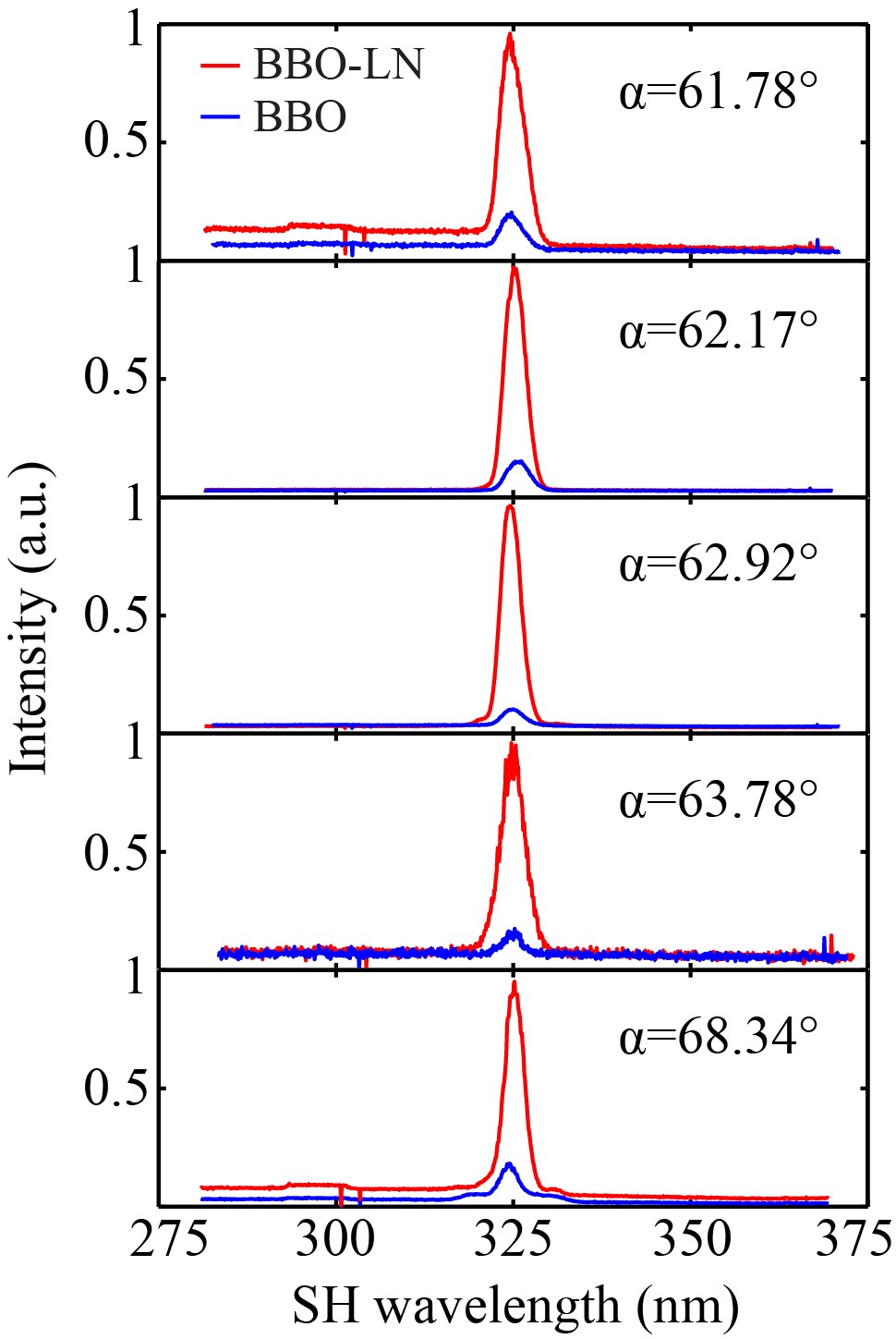
Time:2018-05-02 Read:1590
Tunable deep ultraviolet (UV) light sources have a wide range of application prospects in micro-machining and semiconductor processing, high-density optical storage, photoelectron spectroscopy, atomic clocks, and quantum computing, etc. At present, there is no direct-operation all-solid-state deep UV laser, and it is necessary to convert the long wavelength to the ultraviolet region by frequency up-conversion. The existing UV nonlinear crystals have the disadvantages of small nonlinear coefficient, difficult growth, etc. The new nonlinear phase matching methods will be one of the ways to achieve efficient UV harmonic output.
Based on the analysis of the nonlinear coupled wave equations in the interface structure, we prove that the greater the discontinuous second-order susceptibilities of the interface, the higher the conversion efficiency of the nonlinear process. In experiment, the interface with large disparity in second-order nonlinear coefficients χ(2) was artificially formed by adhering another UV non-transparent crystal with higher χ(2). When the fundamental wave is reflected at the interface and satisfy the non-collinear longitudinal phase matching condition, the UV second harmonic wave will be enhanced and radiated on the side of the UV crystal. The intensity of SH generated on this artificially fabricated interface was about 5 to 15 times of that on single crystal boundary in our experiment. It suggests potential applications in the UV even vacuum-UV spectral region.
